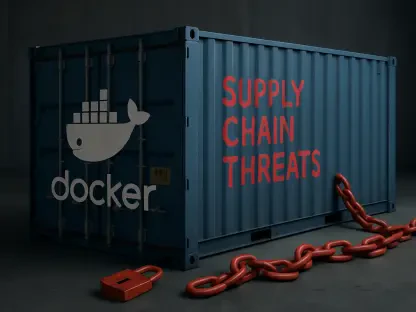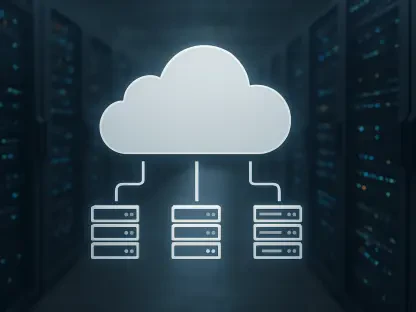As we dive into the evolving landscape of cloud computing within the UK public sector, I’m thrilled to sit down with Maryanne Baines, a renowned authority in cloud technology. With her extensive experience evaluating cloud providers, their tech stacks, and their applications across various industries, Maryanne offers unparalleled insights into how governments leverage these services to drive efficiency and innovation. Today, we’ll explore the UK government’s ambitious G-Cloud framework, the challenges of soaring public sector cloud spending, and the intricate dynamics of vendor relationships. Our conversation will touch on the strategic shifts in procurement, the impact of budget expansions, and the hurdles of creating a competitive cloud market.
How would you describe the G-Cloud 15 framework, and what makes it a cornerstone for the UK public sector’s digital transformation?
The G-Cloud 15 framework is essentially a procurement vehicle designed by the UK government to simplify how public sector organizations access cloud services. It’s a pre-approved list of suppliers and services—covering infrastructure, platforms, and hosting—that departments can tap into without lengthy tender processes. Its importance lies in its ability to streamline digital transformation across government bodies, ensuring they can adopt modern, scalable tech solutions quickly. This framework is critical for fostering innovation, reducing costs over time, and maintaining security standards in an era where data and digital services are central to public administration.
What do you think drove the dramatic increase in the G-Cloud 15 tender value from £4.8 billion over 18 months to £14 billion over four years?
Several factors likely contributed to this jump. First, there’s a growing recognition of cloud as the backbone of modern government operations—everything from citizen services to internal data management relies on it. The extended timeline and budget reflect a long-term commitment to digital infrastructure. Additionally, the scope may have broadened to include more comprehensive services like cloud compute, which wasn’t fully integrated in earlier frameworks. I’d also say the government is responding to past underestimations of demand; public sector cloud adoption has surged, as seen with the £6 billion spent in 2024, and they’re planning for even greater reliance in the coming years.
With UK public sector cloud spending hitting £6 billion in 2024, how sustainable do you see this level of investment given other budgetary pressures?
Sustainability is a real concern. While £6 billion reflects the critical role cloud plays in efficiency and service delivery, it’s a hefty figure when you consider competing priorities like healthcare or education. The value comes from areas like improved data accessibility and reduced physical infrastructure costs—think of how much is saved by moving away from outdated on-premises systems. However, without tight oversight, there’s a risk of inefficiency or overspending, especially if departments duplicate efforts or fail to optimize contracts. The government needs robust cost-benefit analyses to justify this trajectory, balancing innovation with fiscal responsibility.
Delays in rolling out G-Cloud 15 led to extensions of existing cloud framework deals, adding £1.65 billion in potential spending. What do you believe caused these delays, and how have they affected the public sector’s cloud strategy?
Delays often stem from the complexity of aligning a framework as expansive as G-Cloud 15. You’ve got to coordinate across multiple departments, ensure compliance with evolving regulations, and engage with a wide range of suppliers—all while avoiding disruptions to existing services. These extensions, while necessary to bridge the gap, likely increased costs due to less favorable interim terms or rushed negotiations. Strategically, it’s a hiccup; it slows down the adoption of newer, potentially more cost-effective solutions and risks stalling momentum in digital transformation. But it also shows pragmatism—keeping services running is paramount, even if it’s not ideal.
Vendor lock-in has been flagged as a major issue, limiting the government’s negotiating power with cloud providers. Can you break down what this means in the context of public sector cloud adoption?
Vendor lock-in happens when a government or organization becomes so reliant on a specific cloud provider’s ecosystem—think proprietary tools, data formats, or integrations—that switching to another provider becomes costly or technically challenging. In the public sector, this weakens bargaining power because you’re stuck with limited options; you can’t easily walk away to negotiate better pricing or terms. It’s a bit like being tied to a single supplier for your groceries—you lose the leverage to shop around. This can lead to higher costs over time and stifles competition, which is counterproductive to the government’s goal of a dynamic, cost-efficient cloud market.
How can the government tackle vendor lock-in to foster a more competitive environment for cloud services?
Addressing vendor lock-in requires a multi-pronged approach. First, adopting open standards and interoperability protocols can make it easier to switch providers or use multiple ones without compatibility headaches. Second, the government could invest in multi-cloud strategies, spreading workloads across different vendors to avoid over-reliance on one. Training staff to understand and manage diverse cloud environments is also key. Finally, procurement policies should prioritize flexibility—contracts need exit strategies and clear terms to prevent being boxed in. It’s about building resilience and choice into the system from the start.
There’s a suggestion that individual departments need to better align their cloud requirements to secure better deals. What challenges do you see in getting different government bodies to coordinate effectively on this front?
Coordination across departments is tricky because each has unique needs, budgets, and timelines. One department might prioritize data security for sensitive information, while another focuses on scalability for public-facing apps. These differing priorities can lead to fragmented purchasing, weakening collective bargaining power. There’s also the issue of siloed decision-making—departments often operate independently, lacking a unified strategy. Past misalignments have sometimes resulted in redundant contracts or incompatible systems, driving up costs. A centralized oversight body or shared guidelines could help, but it requires overcoming bureaucratic inertia and fostering a culture of collaboration.
Looking ahead, what is your forecast for the future of cloud adoption in the UK public sector over the next decade?
I expect cloud adoption to accelerate significantly, becoming the default for nearly all government operations within the next decade. We’ll likely see deeper integration of advanced technologies like AI and machine learning, powered by cloud infrastructure, to enhance everything from policy analysis to citizen services. Budgets will continue to grow, but I anticipate more scrutiny on value for money, pushing for smarter, multi-cloud approaches to avoid lock-in. The challenge will be balancing innovation with security and cost—cyber threats will evolve, and so must defenses. If frameworks like G-Cloud 15 can deliver on flexibility and competition, the public sector could set a global benchmark for digital governance.









